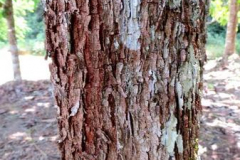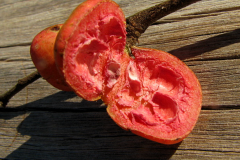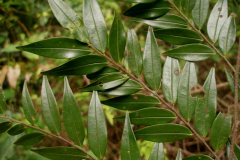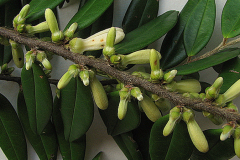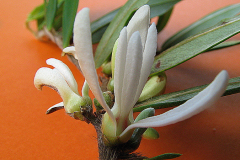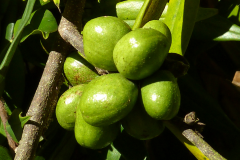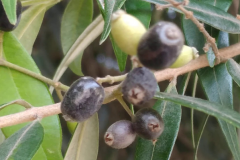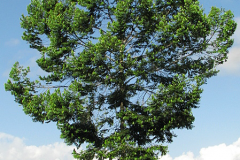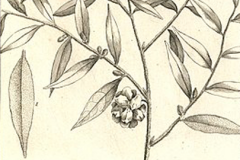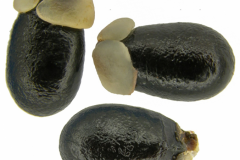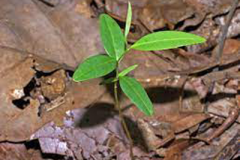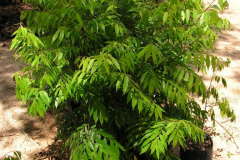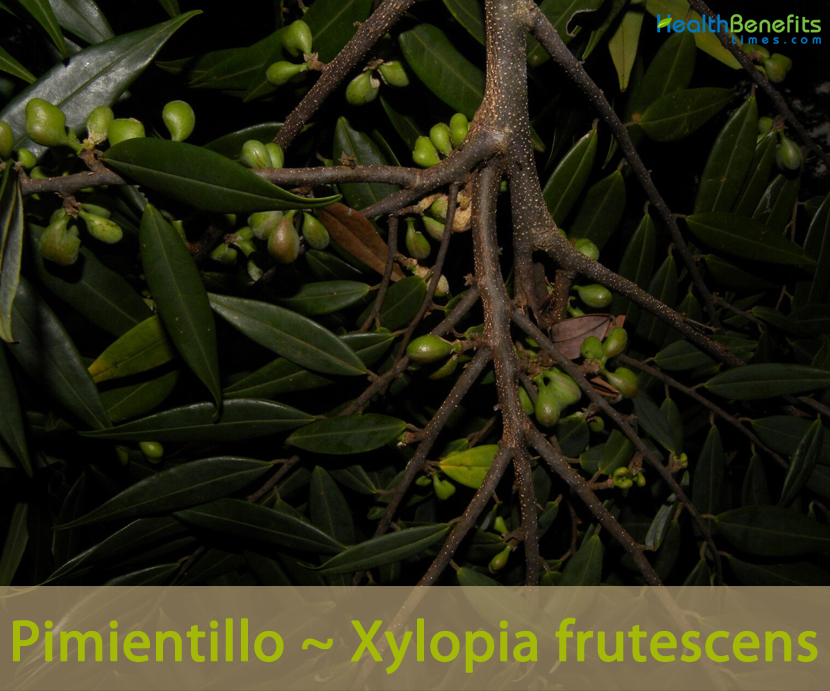 Xylopia frutescens popularly known as Pimientillo is actually an evergreen tree belonging to Xylopia L genus and Annonaceae (custard apples) family. The plant is native from South Mexico to Southern Tropical America. Few of the popular common names of the plants are Pimientillo, Embira, Embiriba, Embiribinha, Envira and Envirira.
Xylopia frutescens popularly known as Pimientillo is actually an evergreen tree belonging to Xylopia L genus and Annonaceae (custard apples) family. The plant is native from South Mexico to Southern Tropical America. Few of the popular common names of the plants are Pimientillo, Embira, Embiriba, Embiribinha, Envira and Envirira.
Pimientillo Facts
| Name | Pimientillo |
|---|---|
| Scientific Name | Xylopia frutescens |
| Native | S. Mexico to S. Tropical America |
| Common Names | Pimientillo, Embira, Embiriba, Embiribinha, Envira, Envirira |
| Name in Other Languages | Chinese: Tè ruìmù bàn mù (特瑞木瓣木) English: Pimientillo, Alasa pegretoe, Kuyama, Pedreku, Pegrekoe, Pegrekoe wood, Polewood, Shrubby xylopia French: Conguericou, Jejerecou, Jejereku, Xylopie frutescente Japanese: Koagerukuu (コアジェルク) Portuguese: Coagerucu, Embira, Embira-preta, Embira vermelha, Imbira, JejerucÃ, Pajerecu, Pau-carne, Pau de imbira, Pimenta longa, Pimientillo, Pindaiba, Embiriba, Embiribinha, Envira, Envirira, Pindaíba-de-folha-miúda, Pindaíba-preta, Sementes-de-imbira Spanish: Brujo, Malagueta, Malagueto, Malagueto chico, Malagueto hembra, Malagueto macho, Manga larga, Palanca, Palata, pimientillo |
| Plant Growth Habit | Medium-sized evergreen tree |
| Growing Climates | Rainforests, roadside, farmland and in areas that are not typically subject to intermittent flood |
| Soil | Prefers medium-fertile, well-drained, sandy soil. Established plants are drought tolerant. Newly planted young trees commonly establish well and grow away rapidly |
| Plant Size | 4 – 8 meters tall (up to 20 meters in the Guyanas) and has a straight, cylindrical bole that can be 20 – 30 cm in diameter |
| Leaf | The simple leaves are alternate, evergreen. They are lanceolate, entire and petiolate |
| Flowering season | May and June |
| Taste | Acrid, aromatic taste |
Plant Description
Pimientillo is a medium-sized evergreen tree with longish, spreading crown and very typical horizontal branches. The plant normally grows about 4 – 8 meters tall (up to 20 meters in Guyanas) and has a straight, cylindrical bole that is 20 – 30 cm in diameter. The plant is found growing in. The plant prefers medium-fertile, well-drained, sandy soil. Well established plants are drought tolerant. Newly planted young trees commonly establish well and grow away rapidly.
Branches are long and have numerous leaves. Leaves are sharp, arranged in a flat plane, regularly-spaced and alternate. Underside of the leaf has a mild, bluish color, and secondary veins seem to be lacking (noticeable under nearby inspection). On larger trees, the long branches sag is such a way that from a distance, the whole crown seems pointy at top, in the form of Christmas tree. The tree is collected from the wild for local use as a source of medicines, food and numerous products.
Traditional uses and benefits of Pimientillo
- Branches are utilized in the treatment of catarrhal toxicities of urinary mucous membranes.
- Branches are an element in a decoction along with Alpinia galanga for dealing with dental cavities.
- It is used in the treatment of dysentery as well as various other stomach disorders.
- It is mixed with coffee and used as an asthma cure.
- Seeds are anti-rheumatic, aromatic, aphrodisiac, diuretic, carminative, tonic and eupeptic.
- They are used in the treatment of weakness escorted by lumbar aches etc.
- It is considered an effective treatment of snake bites.
- It is also used to treat dental caries and catarrhal disorders of the mucous membranes and urinary tract.
- An infusion of the seeds is used in the treatment of stomach cramps as well as colic.
- It is extensively used to treat digestive problems, flu, tooth decay, rheumatism, bladder stimulant and halitosis.
- Local people used medicinally to deal with dental cavities, stomach complaints, catarrhal infections and other treatments.
- The plant consists of anti-viral and anti-tumor properties.
Culinary Uses
- The fruit is very aromatic.
- It may be used as a condiment.
- Due to its acrid, aromatic taste the fruit is used as a substitute for pepper.
- Tree is harvested as a source of food.
Other Facts
- Stakes of the green branches are used to make hedges.
- It is a fairly fast-growing, pioneer species that might be suitable for re-establishing woodland condition.
- Wood is hard and much-used by local farmers for tools and construction.
- Fiber from the bark is used to make burlap and rough ropes.
- Oil from the seeds is rubbed into the hair to give it luster.
- It is used in general construction; as poles for small boats, wooden shoes, tool handles etc.
- Traditionally, it is often selected as the important ridge pole for native houses.
- Wood is appropriate for firewood and for making charcoal.
- In Honduras hair tonic is prepared from seed oil.
- Trees can be used for house construction in countryside areas.
- Wood is used in house poles and as poles in alternative of blades to move hollow canoes in superficial water.
References:
https://www.itis.gov/servlet/SingleRpt/SingleRpt?search_topic=TSN&search_value=506196#null
http://www.theplantlist.org/tpl1.1/record/kew-2468224
https://tropical.theferns.info/viewtropical.php?id=Xylopia+frutescens
https://gd.eppo.int/taxon/XYPFR


